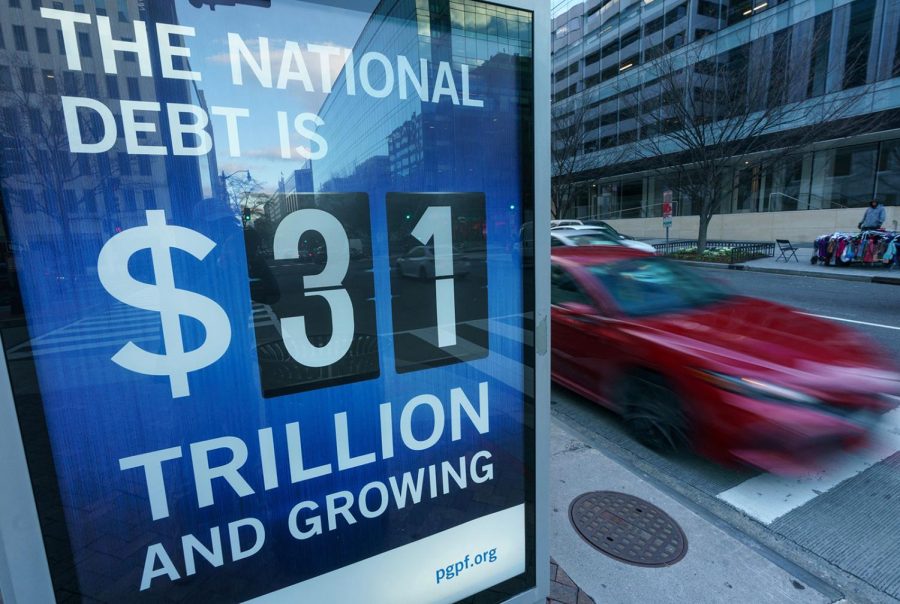U.S. reaches debt ceiling again after raising it in 2021
The United States has reached its debt limit of 31.4 trillion, causing increased tension in Congress
Mandel Ngan / AFP via Getty Images / TNS
A sign at a bus shelter shows the national debt in Washington, DC on Jan. 20, 2023.
March 1, 2023
The United States has reached its debt limit again after it was raised in Dec. 2021 from 2.5 trillion dollars to 31.4 trillion. Right now, in the U.S. the debt limit has been reached and Congress is in an ongoing debate on whether or not to raise the debt limit or default on it.
The debt limit or debt “ceiling” is the maximum amount of debt that the federal government can acquire. These debts come in the form of Medicare, Medicaid, Social Security and any spending that the federal government needs in order to continue effectively doing its job.
The federal government reaching the debt ceiling can result in a default. A default occurs when the federal government can no longer pay for things that are a part of their basic job. This can have consequences for the everyday lives of citizens in the U.S.
If the U.S. government were to default on its debt and can’t make the payments it needs to, it will have long-lasting economic effects. According to the Committee for a Responsible Federal Budget, all markets (international and domestic) rely on the stability of the United states. This means if the stability of the U.S. economy were to collapse, international trade would be affected, not just domestic.
Adam Malenius, a social science teacher at MCHS states, “If the United States government defaults on its debt, there is a risk that the US Dollar could weaken. People worldwide could no longer trust the security of the US Dollar and its bonds.”
Not only would trade be affected, but people would lose their jobs and interest rates would go up; these consequences of a government default could possibly last for 2-4 years.
In Congress, the Democratic and Republican parties are clashing trying to decide if the debt limit should be raised yet again. Republicans are pushing for Congress to not raise the debt ceiling because they would like to cut government spending, while Democrats wish the debt ceiling to be raised again.
With the use of extraordinary measures and using all cash the government has on hand, the U.S. federal government could extend the deadline to May or June. This will give Congress more time to decide to raise the debt limit or default for the first time in United States history.






















